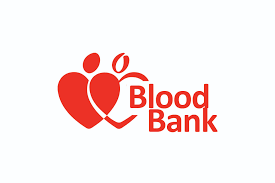24/7 Emergency Services

Every country has some sort of system to provide surgical and other health services at various levels, with a progressive increase in the capacity to treat more complicated problems.

Greeting. I'm a cancer specialist, a Medical Oncologist. After Training at the Prestigious Army Hospital R&R in Delhi, I had the opportunity to work with the Illustrious and famous faculty at two of my previous tenures. I now work with a team of expert cancer specialists in BGS GLOBAL Hospitals Bangalore.
After Training at the Prestigious Army Hospital R&R in Delhi, I had the opportunity to work with the Illustrious and famous faculty at two of my previous tenures. I now work with a team of expert cancer specialists in BGS GLOBAL Hospitals Bangalore.
- Sed ut perspiciatis unde omnis iste natus
- 1914 translation by H. Rackham
- consectetur adipiscing elit
- Contrary to popular belief
The Ideal
Although most health systems are organized as a pyramid, with primary care facilities at the base and national third-level hospitals at the apex, the specifics vary among countries (Chatterjee, Levin, and Laxminarayan 2013; Galukande and others 2010; Lebrun and others 2013; Zafar and McQueen 2011). In most of Sub-Saharan Africa, dispensaries and health centers provide primary care, deliver newborns, and usually perform minor surgery. When patients need major surgery, they are meant to be referred to a district (first-level) hospital, usually with 100 to 200 beds, serving a population of 100,000 to 500,000 (Galukande and others 2010). In Bangladesh, India, and Pakistan, the smallest unit regularly providing major surgery is also called a district hospital, but the districts are much bigger, usually with a population of 2 million or more (Chatterjee, Levin, and Laxminarayan 2013; Lebrun and others 2013; Zafar and McQueen 2011). In Latin America and the Caribbean, many quite small “basic hospitals” provide first-level surgical functions for populations of fewer than 100,000, and refer patients to a fairly extensive network of second- and third-level hospitals (Lebrun and others 2012; Solis and others 2013).
However the pyramid is structured, the constraints listed previously seriously limit the way it can function. The two most important and difficult of these constraints are the shortage of trained staff, which limits the services that can be provided, especially in first-level hospitals, and the weakness of the referral system, which often makes it impossible to send patients to a higher level, where more highly trained staff may be available. Clearly, the two problems work against each other. If trained staff are not available, patients should be referred. If they cannot be referred, they often do not receive appropriate treatment, which can lead to death or serious disability. Although the emphasis today needs to be on initiatives to increase the capacity of peripheral first-level hospitals, access to transportation and referral can reduce the need for this expansion of capacity and lead to a more efficient system.

More Services
Intensive Care
Virtually every country has a private health sector, which is often divided into charitable facilities (usually faith based) and for-profit facilities.
Easy Appointments
More general surgical operations (including trauma, acute abdomen, and other surgical emergencies) are performed in hospitals that have specialists available, but estimates indicate that in all region
Food & Beverage
Health centers (clinics, usually without inpatient beds except for normal deliveries) deliver babies, suture small lacerations, and drain small abscesses, but very few provide more comprehensive servi
24/7 Blood Bank
One unit of whole blood is volume is the standard amount collected during a single blood donation and is crucial for effective management of blood bank inventories and medical treatments


